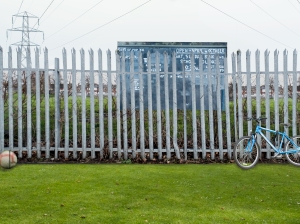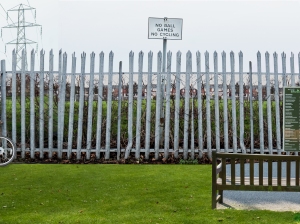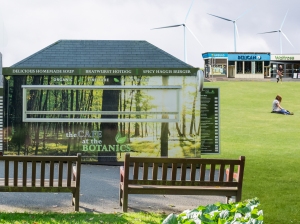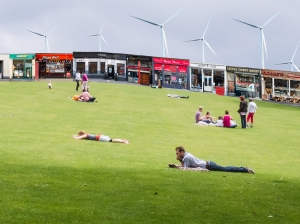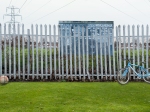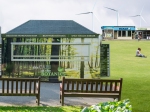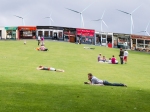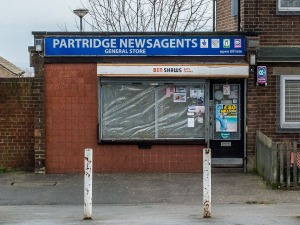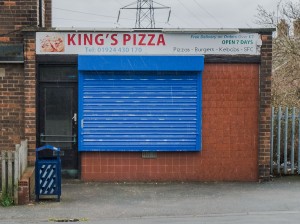I have been giving a lot of thought recently to the impact of words on a body of photographic work, such as the one I am developing at the moment.
When I went to see Chloe Dewe Mathews’ Shot at Dawn exhibition at The Stills, the impact of words was quite significant to the interpretation of the work. The large scale photographs of relatively ordinary fields, a school, trees, a church, etc., were accompanied with a list of names. Connecting that to the title of the work ‘Shot at Dawn’ and you begin to make a connection. With your interest pinged and a little more research, the understanding of the works becomes clear that these locations are places were soldiers were shot for desertion. Then suddenly your appreciation for the works rises to another level.
Also, at the exhibition ‘Conflict Time Photography’ held at the Tate Modern in London, there was so much work on show that it was only by reading the accompanying words that one gained a better appreciation of the work. This was probably also of particular importance for this type of work as most of it was focused on remembrance of a time passed which had erased most of the evidence of the conflict that had previously occurred.
With my body of work, I have quickly concluded that I will not be adding labels to any of the photographs. I rarely find that this works and is a bit too directional. The ambiguity of my series is what I think makes it work; which can even confuse me at times as I see different layers of understanding within it, and which is something I want to retain within. This leaves me with two further opportunities to support my work with words; these are the title of the body of work and an accompanying written piece – such as the artist’s statement.
As the work incorporates pairs of images from which the audience is able to compare and contrast, I wanted a title that encompassed how these pairs of images related to each other. When I first started this body of work I wrapped a lot of my investigations around a working title of ‘Land Values’, and while I think that there is still an intrinsic element of this within the work, I now believe that it has shifted away from this direction. I do also believe that I have a much better understanding now of what I am trying to say with this work, which has definitely benefited from the research I have been doing particularly around my Contextual Studies report.
In light of this, the Council estate aspect is about looking back at what as a society we might have lost from the past and questioning whether we might long for its return. For the Glasgow estate it is about reflecting on the future and the opportunities that might be possible as I begin to engage with this place. This is why I am relatively happy with the title ‘Lost Opportunities’, however, the further interesting aspect of this is the way that by joining these words together it creates a further meaning – Lost Opportunities could also suggest regret, which is possibly something I am asking within the work but not necessarily intending as a direct statement.
With this title relatively firm in my mind the next question for me is the introduction of a short written piece. As there is an academic purpose to this work I think it suitable to incorporate this as an artist’s statement. I have had several goes at this over the last few months and there are several blogs associated with my different attempts. I was generally happy with the last attempt, however, having followed a useful discussion on this topic on the OCA website I decided that I needed to give it another refresh. I was little concerned that I had shifted it too far towards a general audience’s understanding of it and that it needed a little more academic vigour. The revised version is included below, which will form part of my Assignment 4 submission of the body of work. Before I include it though I also want to mention that I am still wondering where to place it within my Body of Work. On the fairly firm assumption that I will be producing a book, I am undecided whether I should put the text at the front or at the back of the book. I am liking the idea of allowing my audience to view the images first and getting them to think about it before reading about my intentions.
So here is my revised artist’s statement:
Lost Opportunities investigates how changes of time, place, and society can change a person’s relationship with, and appreciation for, both land and the place it forms. It does so by looking back at a Council estate in West Yorkshire where I grew up, and then compares this with the present area I have just moved to in Glasgow.
Images of the Council estate recall ordinary places that have a significance to me, whilst also depicting what I now reimagine as a childhood paradise where I was seemingly free to engage with the land and place oblivious of the threat to this utopia from adulthood and societal influences. The imaginary idealisation of this time identifies with Neo-Romantic principles which regards the past as an integral part of our heritage and national identity and thus something we must preserve, or maybe long for its return.
In Glasgow I wandered around this new place to seek out the heritage I have now adopted, to reflect on its potential of becoming significant to me in the future, and to question whether the idealised notion of a childhood paradise could still be created in this place today. This shift in time, place and society forms a narrative about change, to ask whether it is a threat to the way things were, or the beginning of new opportunities.

